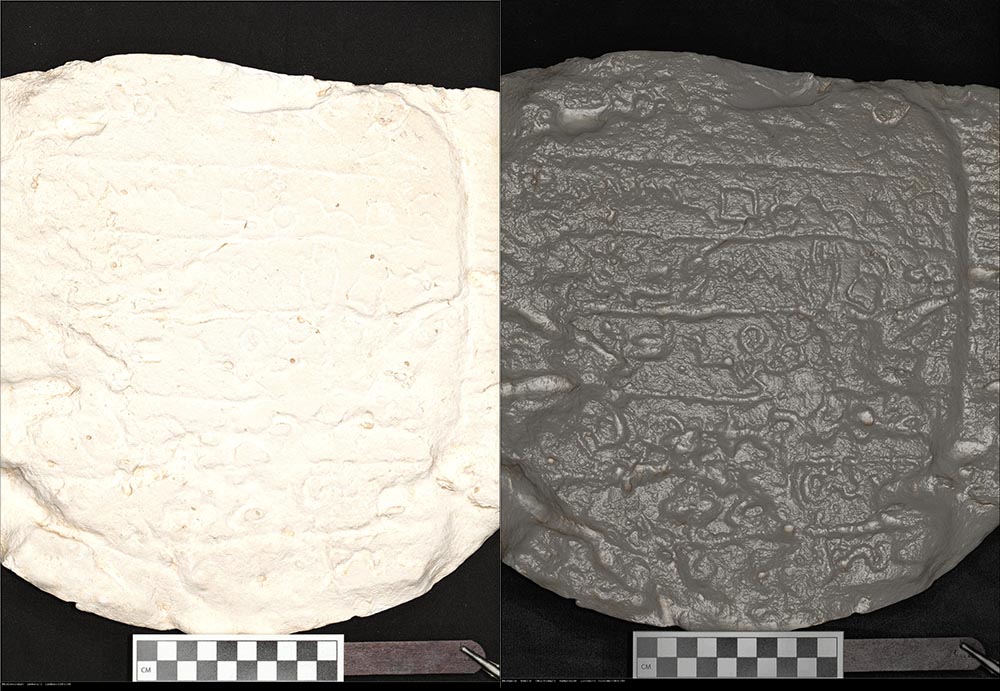Last week, we touched upon three new technologies that have revolutionized the field of epigraphy. These technologies have changed the way epigraphers see their inscriptions. Today, we will introduce another four technologies that have changed epigraphy in the 21st century.
Multi-Spectral Photography
With the proliferation of digital cameras, many people now have a second (or third) DSLR camera just lying around. As epigraphers, we don’t need to have those old cameras go to waste. Instead, we can send them to a conversion lab to have them converted for multi-spectral photography.
Most of the photodiodes in DSLR cameras are already sensitive to infrared and ultraviolet light. This is normally a bad thing as these light wavelengths cause false colors with visible light photography. So camera manufacturers add filters over the photodiode to screen out infrared and ultraviolet light.
By removing the infrared filter and adding a visible light filter, you can get an infrared camera. Infrared cameras are useful for infrared luminescence. By removing the ultraviolet filter and adding a visible light filter, you can get an ultraviolet camera. Ultraviolet cameras are useful for detecting the pigments and minerals that fluoresce in the ultraviolet spectrum.
Multiple Light Photography
With advances in photography has also come advances in photographic setups and procedures to capture difficult to obtain information. One of the most rudimentary of these is the multiple light setup. With multiple light photography, the camera is kept in one position and the light sources are moved around the piece in progressive small angles. Typically this this done in a 180 degree arc.
The advantage of this is that it can capture the fine details in the recesses of the piece, which can be exposed just by moving the light to another position.
Polynomial Texture Maps
This technique scans the surface of an artifact and recreates the surface of an object as a high resolution map of polygons. Using this you can see the object from various angles and shine artificial lights upon the map to see the details.
Furthermore, the contrasting topography of a piece can be emphasized so that you can detect small details in the texture of the piece. PTMs are often the next best thing to being able to see an object in person. In the featured photo above, we see two images of Sinai 349 with the polynomial texture map to the right.
Strobe Lighting
Sometimes, none of the above techniques are all that helpful. And the epigrapher just has to examine an artifact in person. Perhaps, the contrast between the inscription and the matrix is too low. Or maybe the inscription is too shallow to see or photograph clearly. There is one more advanced technique that is helpful. While not strictly speaking new, strobe lighting has recently found new usefulness in epigraphy.
When you look at a stela with only discrete color differences between inscription and matrix, your vision adjusts faster than your brain can figure out what you’re seeing. In a tenth of a second, your visual cortex becomes saturated and those discrete color differences between inscription and matrix wash out.
What strobe lighting does is prevents your visual cortex from saturating. This way you can continue to see the fine differences between the inscription and stone matrix. The net result is that visual features not seen previously begin to emerge.
